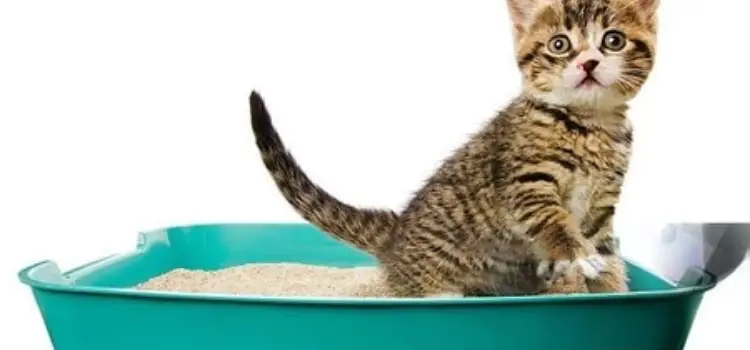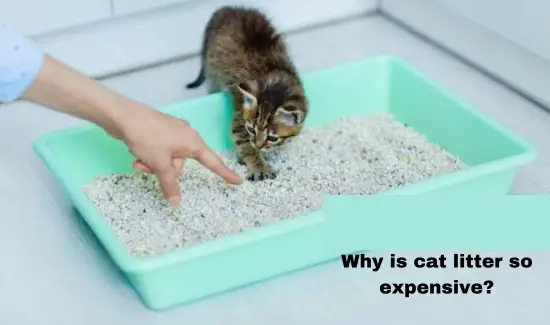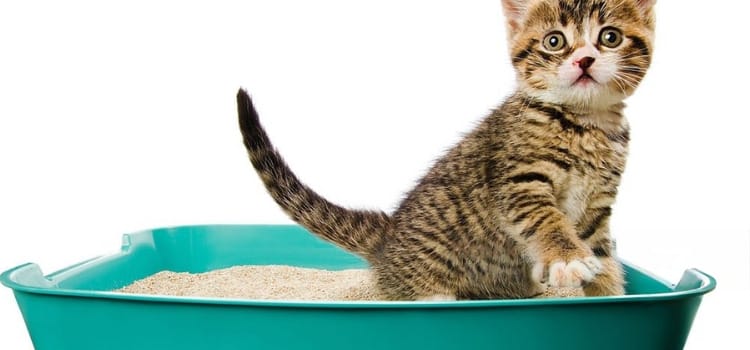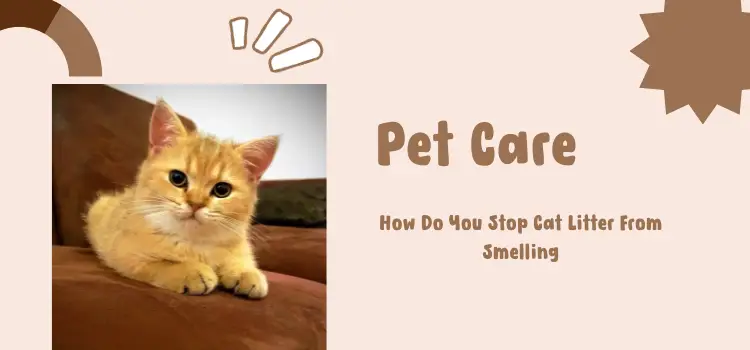When keeping your cat’s litter box clean and comfortable, one of the most important factors is knowing how much litter to put in the box. The right amount of litter helps with odor control and ensures your cat has enough space to do their business comfortably.
So, how much cat litter should you put in a litter box? The answer may vary depending on different factors such as the type of litter, size and number of cats using the box, and personal preference.
This blog post will cover everything from ideal quantities for optimal hygiene to preventing those dreaded litter box mishaps. Get ready to revolutionize your litter box game positively.
Introduction To Cat Litter And Litter Boxes:
If you have a cat, having a litter box is essential to your life. Cats are known for their cleanliness, and providing them with a designated area to do their business is crucial in maintaining the hygiene of your home.
A litter box keeps your house clean and provides a comfortable space for your feline friend to fulfill their instincts.
What is a Cat Litter?
Cat litter is a granular or clumping material used in litter boxes to absorb urine and cover feces. It helps control odor, making it easier for pet owners to maintain cleanliness and hygiene at home.
Choosing the right cat litter type depends on your cat’s preferences, budget constraints, household size, and lifestyle choices.
Some cats may prefer unscented litters, while others may dislike certain textures or litters. Thus, it’s crucial to experiment with different options until you find the one that works best for you and your furry friend.
What are Litter Boxes?
Litter boxes are containers specifically designed for cats to urinate and defecate in. They come in various shapes and sizes depending on the number of cats in the house and their size. The most common types include open trays.
Importance Of Properly Filling A Litter Box:

A litter box is an essential item for any cat owner. It provides a designated area for your feline friend to do their business, keeping your home clean and odor-free. However, many cat owners must pay more attention to correctly filling a litter box. In this section, we will discuss why filling your cat’s litter box is crucial.
1. Comfort for Your Cat:
Cats are known for their cleanliness and can be pretty picky regarding bathroom habits. An adequately filled litter box ensures your cat has a comfortable and inviting place to do their business.
If the litter box is too shallow or not filled enough, your cat may feel uncomfortable using it and start avoiding it altogether. This could lead to accidents around the house, causing frustration for you and your pet.
2. Preventing Litter Tracking:
One common issue many cat owners face is litter tracking – when tiny pieces of litter get stuck in your cat’s paws and carried outside the litter box, leaving a trail all over the house. This can be easily avoided by filling the litter box with appropriate litter. Too little litter can cause clumps on the bottom of the tray, making it easier for them to stick on your cat’s paws as they dig through it.
3. Proper Waste Absorption:
The primary function of cat litter is to effectively absorb moisture and odors from waste products if there needs to be more litter in the tray.
Factors to Consider When Determining the Amount of Cat Litter:

When determining the amount of cat litter to put in a litter box, several factors need to be considered. This includes the type of litter, the size and age of your cat, their toileting habits, and the frequency of cleaning the litter box. Let’s take a closer look at each factor.
1. Type of Litter:
The type of cat litter you use can significantly impact how much should be used in a litter box. For example, clumping clay litters absorb liquids and odors more efficiently than non-clumping or natural alternatives. Therefore, you may need less clumping litter than non-clumping or natural options.
2. Size and Age of Your Cat:
A giant or older cat naturally produces more waste than a smaller or younger cat. For every pound your cat weighs, you should have 1-2 inches of litter depth in the box. So, if you have multiple cats, consider their combined weight when determining how much litter is needed.
3. Toileting Habits:
Just like humans have different bathroom habits, cats also have varying toileting habits. Some cats prefer to dig extensively before doing business, while others may cover up quickly and move on with their day.
If your cat tends to dig a lot before using the bathroom, you may need more litter for them to feel comfortable exploring without touching the bottom of the tray.
4. Frequency of Cleaning:
When it comes to the frequency of cleaning your cat’s litter box, opinions may vary among pet owners. Some swear by daily cleanings, while others believe in a more relaxed approach. The truth is, there isn’t a one-size-fits-all answer.
Some pet parents choose to clean the litter box every few days or even once a week. They argue that as long as you scoop out waste regularly and add fresh litter when needed, less frequent deep cleanings are acceptable. This approach might suit busy individuals or households with multiple cats where constant cleaning can become overwhelming.
If you notice your fur baby expressing dissatisfaction or avoiding their litter box altogether despite regular scooping, it might be time to increase the frequency of cleaning.Remember that maintaining proper hygiene in your home is crucial for both you and your beloved kitty companion!
Size of the Litter Box:
When setting up a litter box for your cat, one crucial factor to consider is the size of the litter box. The right size can make all the difference in how comfortable and willing your furry friend is to use it. This section will discuss everything you need to know about choosing the right size litter box for your cat.
The first thing to remember when selecting a litter box is that bigger is always better. Cats like their personal space, and having a spacious litter box gives them enough room to move around comfortably while doing their business.
A general rule is that the litter box should be at least one and a half times longer than your cat from nose to tail.
The width of the litter box is also crucial, as cats like to dig around before they settle on a spot to eliminate. A good rule of thumb for width is that it should be equal to or slightly wider than your cat’s length when stretched out. This will give them enough space to turn around comfortably and find their preferred spot.
In terms of depth, the ideal depth for a litter box is 3-4 inches. This allows for enough litter material for your cat to cover their waste without spilling over the edges. If you have an older or special needs cat, consider opting for a shallower litter box with no more than 2 inches of depth, as it may be easier for them to access.
Number of Cats Using the Box:
Regarding cat litter, one crucial factor is how much to put in the litter box. This affects the cleanliness and odor control of the litter box and directly impacts the number of cats that will use the box.
The number of cats using the litter box is an essential consideration because if there are multiple cats in a household, they may have different preferences and behaviors when it comes to using a litter box. Some cats may be more dominant and prefer their designated space for elimination, while others may be more submissive and willing to share a litter box.
In general, it is recommended to have one litter box per cat in a household. This ensures that each cat has their own designated space for elimination and reduces potential conflicts between them. However, this can vary depending on factors such as the size of your home and your cats’ personalities.
If you have multiple cats sharing one litter box, it is crucial to ensure there is enough room for all of them. Cats are territorial animals and can become stressed if they feel crowded or lack personal space. Opt for more extensive or extra-large litter boxes to accommodate multiple cats comfortably.
Read the manufacturer’s recommendations:
Most cat litter brands provide guidelines on their product’s recommended depth. Start with this as a baseline.
General Guidelines for Filling a Litter Box Correctly:
Filling a litter box correctly is essential for maintaining your cat’s hygiene and comfort. An adequately sealed litter box can also help prevent unpleasant odors and keep your home clean. Here are some general guidelines to follow when filling a litter box:
1. Choose the correct type of litter:
Various types of cat litter are available in the market, such as clay, crystal, and natural options like pine or walnut shells. Each type has advantages and disadvantages, but it is crucial to choose one your cat prefers and is suitable for their needs.
2. Clean the litter box thoroughly:
Before adding new litter, clean the litter box thoroughly with mild soap and water. This will remove any lingering odor or bacteria that may deter your cat from using it.
3. Decide on the appropriate depth:
The ideal depth of the litter in a litter box should be about 2-3 inches. This depth allows your cat to dig comfortably without causing a mess outside the box.
4. Avoid overfilling:
It may seem tempting to add more than 2-3 inches of litter to reduce how often you have to change it, but this can lead to problems for both you and your cat. Too much litter can create an uneven surface, making it challenging for your cat to navigate through, leading to accidents outside the box.
5. Replace regularly:
Regularly replace all of the old used kitty litters with fresh ones at least once every week or depending on how many
Signs That Your Cat’s Litter Box Needs to be Refilled or Cleaned
Maintaining a clean and odor-free litter box is crucial for the health and happiness of both your cat and yourself. Here are some tips to help you properly maintain your cat’s litter box:
1. Scoop Regularly:
Cats are very clean creatures, and they prefer a clean litter box. Make sure to scoop out any waste at least once daily, if not more often. This will prevent unpleasant odors from building up in the litter box.
2. Change Litter Frequently:
It is recommended to completely change the litter in the box every 2-3 weeks. However, if you have more than one cat or notice that the litter smells particularly bad, it may need to be changed more frequently.
3. Use Unscented Litter:
While scented litters may seem like a good idea for masking odors, they can overwhelm cats’ sensitive noses. Stick to unscented litters to avoid any potential discomfort for your furry friend.
4. Choose High-Quality Litter:
Not all litters are created equal – some may clump better or control odors more effectively than others. Research different brands and types of litter to find one that works best for you and your cat.
5. Don’t Overfill:
When filling the litter box with fresh litter, ensure not to overfill it as this can lead to tracking and messes outside the box.
1. Follow the recommended amount:
Most cat litter have instructions on the package indicating the ideal depth or weight needed for proper usage. Generally, this ranges from 2-3 inches deep or 3-4 pounds of litter per average-sized litter box.
It is essential to follow these recommendations as they are often based on extensive research and provide optimal conditions for your cat’s needs.
2. Consider your cat’s habits:
Some cats prefer deeper litter boxes, while others may not mind a shallow layer. If you notice that your kitty tends to dig vigorously or covers its waste excessively, it might indicate that it needs more litter in its box.
On the other hand, if your cat spends most of their time outside and rarely uses their litter box, then a thinner layer may suffice.
Conclusion:
Finding the right amount of cat litter for your litter box can improve your cat’s experience and make cleaning up more accessible. Our tips have helped you determine how much cat litter to put in your litter box based on size, number of cats, and type of litter.
Remember to regularly scoop out waste and replace the entire contents of the box every 1-2 weeks. Considering these considerations, you can ensure a happy and healthy environment for you and your feline friend.






Fantastic blog! Do you have any tips and hints
for aspiring writers? I’m hoping too start my own website
soon but I’m a little lost oon everything. Would you advise starting with a free platform like
Wordpress or go for a paid option? There are so many choices out there that
I’m totally confused .. Any ideas? Thanks! https://odessaforum.biz.ua/